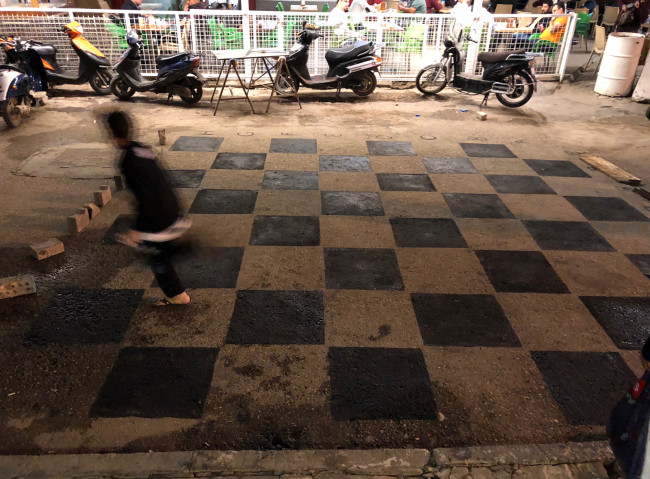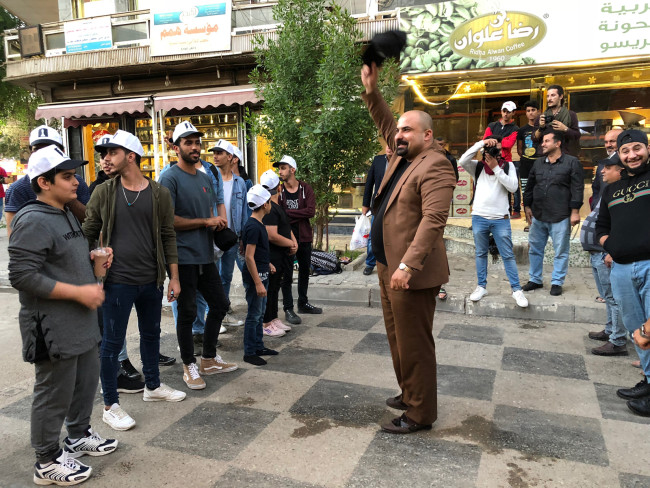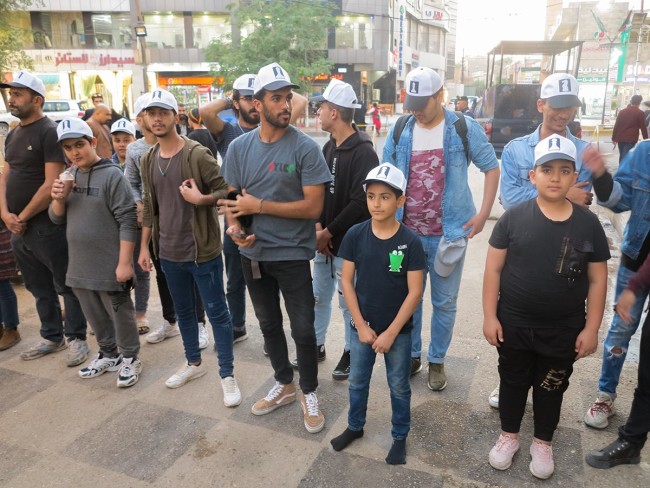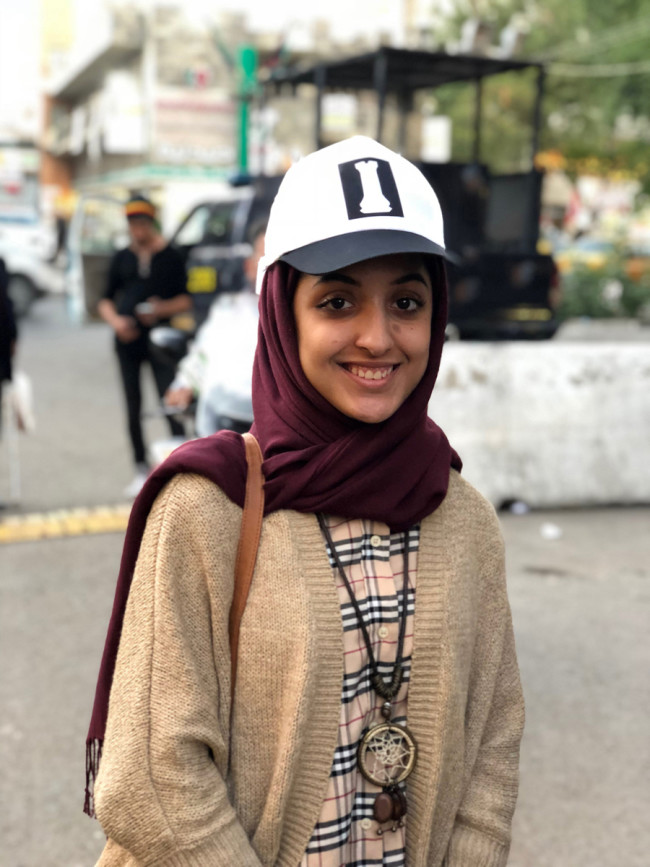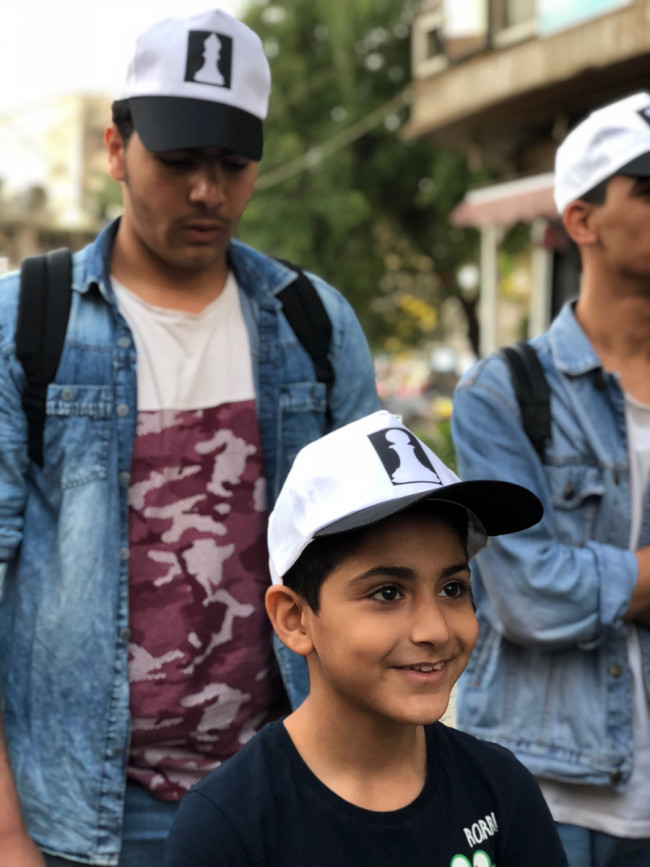17 November 2018
/ Collaboration, Exhibition
⟶
Muhaned Taha: How LongAt Kahramana Square
Photo by Yasir Razaq/Mahdi Al-Shididy
Photo by Christina Werner
Photo by Hella Mewis
Photo by Christina Werner
Photo by Christina Werner
Muhaned Taha’s installation consisted of a two-metre-high funnel filled with sand and gravel and three paintings arranged as a triangle. The paintings were crowned with the shape of a brain hovering at the rim of the funnel, tied to a bundle of white balloons. In HOW LONG, Tana talks about the connection between dream and reality. The three paintings resemble different dreams, with scenes oscillating between sweet dreams and nightmares. Taha positioned his installation to be the third object in a second, larger triangle connecting his work to two other significant objects in the nearby cityscape. The installation thereby created a dialogue with the popular Kahramana fountain by Mohammed Ghani Hikmat in Kahramana Square, which shows a figure from the story of Ali Baba and the 40 robbers, and a surveillance tower disguised as a statue shaped like a palm tree. The work created a web of associations of how society and our individual mind sets (as depicted by the literal brain) are influenced and shaped by narrations and memory, and how control evolves.
Muhaned Taha: How LongAt Kahramana Square
Photo by Yasir Razaq/Mahdi Al-Shididy
Photo by Christina Werner
Photo by Hella Mewis
Photo by Christina Werner
Photo by Christina Werner
Muhaned Taha’s installation consisted of a two-metre-high funnel filled with sand and gravel and three paintings arranged as a triangle. The paintings were crowned with the shape of a brain hovering at the rim of the funnel, tied to a bundle of white balloons. In HOW LONG, Tana talks about the connection between dream and reality. The three paintings resemble different dreams, with scenes oscillating between sweet dreams and nightmares. Taha positioned his installation to be the third object in a second, larger triangle connecting his work to two other significant objects in the nearby cityscape. The installation thereby created a dialogue with the popular Kahramana fountain by Mohammed Ghani Hikmat in Kahramana Square, which shows a figure from the story of Ali Baba and the 40 robbers, and a surveillance tower disguised as a statue shaped like a palm tree. The work created a web of associations of how society and our individual mind sets (as depicted by the literal brain) are influenced and shaped by narrations and memory, and how control evolves.
